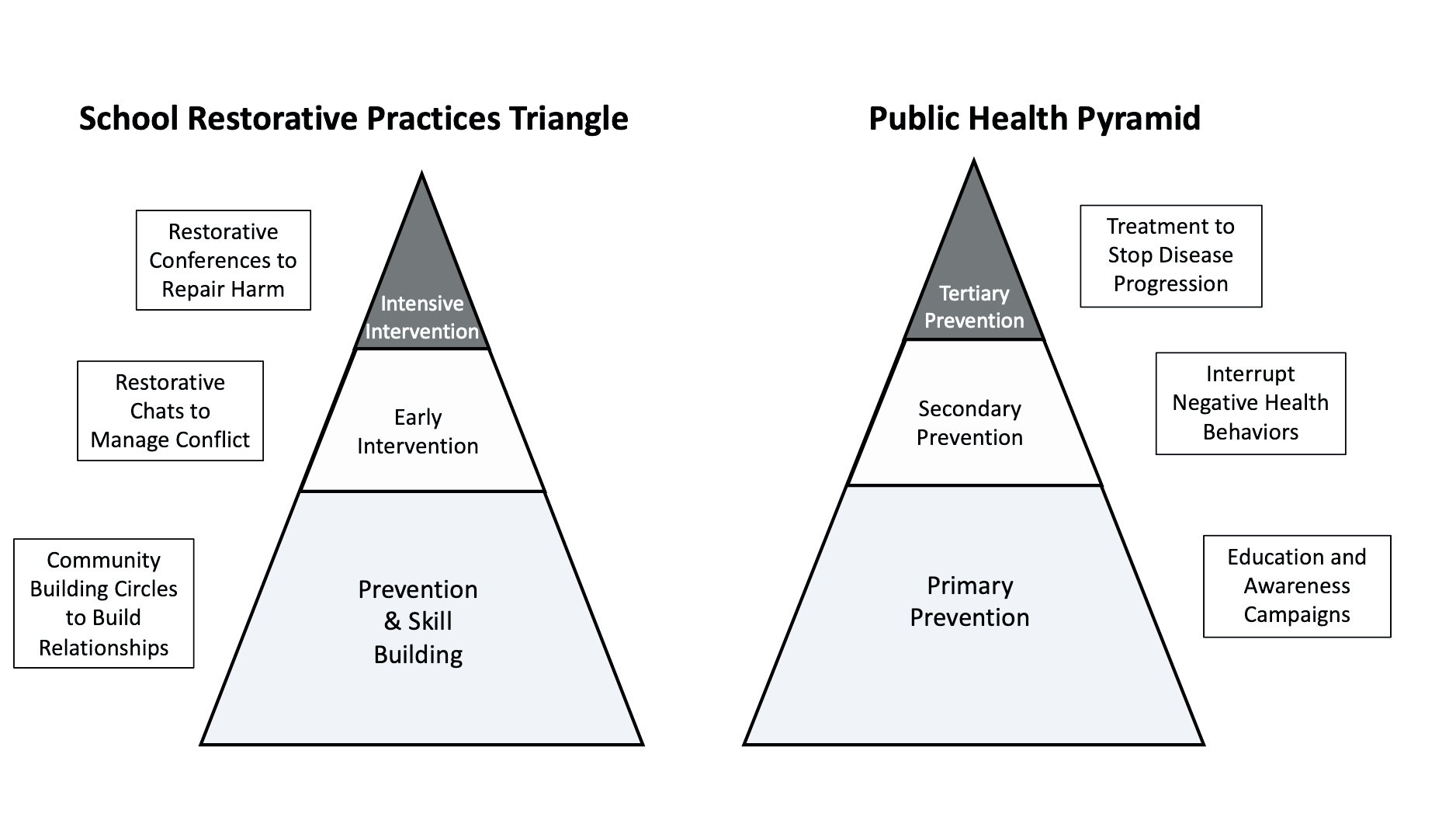Restorative Practices Triangle and the Public Health Pyramid
By JJ Durham
What do school restorative practices (RP) and public health have in common? The goal of both is to improve the health and well being of the population and both come from ancient cultures. RP principles come from Restorative Justice which has roots in first nations and indigenous peoples from around the world. Ideas about public health date back to ancient Greek society. The focus for both is on prevention and promoting healthy communities. In public health the aim is to prevent the spread of disease; in RP the aim is to prevent behaviors that ultimately lead to exclusionary discipline practices and provide alternatives that help reduce recidivism.
In both the Restorative Practices Triangle and the Public Health Pyramid below, the base is the largest because the target is the entire population. The purpose of Community Building Circles, is to improve school climate by building relationships between students and between students and adults. When incorporated into the school community over time, Community Building Circles can reduce the number of behaviors needing discipline. The purpose of Primary Prevention is to educate the population to prevent a health problem before it starts...think classroom education and awareness campaigns targeting a specific health risk i.e. smoking, vaping, HIV infection or violence.
The middle portions of each graphic is Early Intervention or Secondary Prevention. Both are focused on interrupting negative behaviors before they escalate. A Restorative Chat helps students examine their own behavior and its potential impact on others. An early intervention for someone who has started smoking or vaping can be a reminder from a doctor, or family member about the negative health consequences that smoking has on individuals. In both cases there is an opportunity to learn, be reflective and choose different behaviors going forward.
At the top of both graphics is an intensive intervention. The purpose of a Restorative Conference is to repair a harm that has occurred and can involve a number of affected parties including the responsible party, the victim, parents, school administrators and others who have been affected by the harm. The purpose of Tertiary Prevention is to provide treatment for a specific disease to prevent the progression of that disease.
Prevention is at the heart of RP in schools and public health; prevention of negative behaviors and promotion of positive behaviors. In both practices, the goal is to promote, create and maintain healthy communities.

